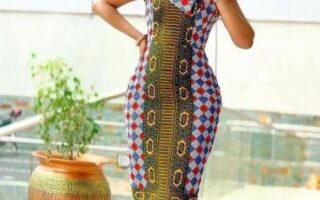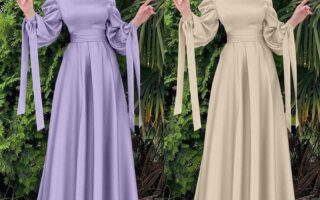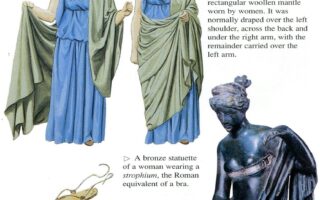Title: The Allure of 1930s Fashion: A Bold Transformation for Women
As the world emerged from the shadow of the Great Depression and navigated the complexities of a decade marked by social change and artistic innovation, women’s fashion in the 1930s blossomed into a captivating reflection of resilience and creativity. In a time when practicality and elegance walked hand in hand, the sartorial choices of women began to evolve, shedding the rigid structures of the previous decade. The designs that graced the runways and streets were not merely garments; they were statements of identity, imbued with glamour and a newfound sense of freedom. From the sophisticated lines of the bias-cut silhouette championed by icons like Elsa Schiaparelli to the playful charm of day dresses and slinky evening gowns, the era redefined femininity. This article delves into the significant trends, influences, and cultural contexts that shaped women’s fashion in the 1930s, celebrating a decade where style became a powerful means of expression.
Table of Contents
- Exploring the Elegance of 1930s Silhouettes and Fabrics
- The Influence of Hollywood Glamour on Everyday Womens Fashion
- Accessorizing the 1930s Look: Hats, Shoes, and Statement Pieces
- Reviving Vintage Style: Modern Ways to Incorporate 1930s Trends
- Q&A
- Final Thoughts
Exploring the Elegance of 1930s Silhouettes and Fabrics
The 1930s marked a transformative era in women’s fashion, characterized by a stunning blend of innovation and nostalgia. This decade saw the rise of the bias-cut dress, which gracefully accentuated the female form, allowing freedom of movement while maintaining an air of elegance. Fabrics like silk, satin, and rayon dominated the scene, bringing a luxurious feel to casual wear and evening gowns alike. The introduction of new textile technologies paved the way for an array of colors and patterns, enriching the visual landscape. Notable elements included:
- Flowing gowns with intricate draping
- Art Deco influences in patterns and embellishments
- Culottes offering style and practicality
- Accessorized hats and gloves as essential wardrobe staples
The silhouettes of this period were defined by the contrast between soft curves and structured lines, with dresses often featuring drop waists or natural waistlines. As Hollywood glamorized its leading ladies, elements of cinematic style seeped into everyday wear, inspiring women to embrace more sophisticated looks. For a quick reference to key styles and fabrics of the time, the table below captures some of the most iconic choices of the era:
| Style | Fabric | Key Feature |
|---|---|---|
| Evening Gown | Satin | Flowing A-line |
| Cocktail Dress | Silk Chiffon | Embellished neckline |
| Day Dress | Rayon | Flared skirt |
| Culotte Suit | Wool Blend | Chic practicality |
The Influence of Hollywood Glamour on Everyday Womens Fashion
The 1930s marked a transformative period in women’s fashion, heavily influenced by the emerging glamour of Hollywood. As the silver screen showcased captivating actresses like Jean Harlow, Greta Garbo, and Katharine Hepburn, their styles became aspirational for women everywhere. Cinematic trends filtered down to everyday life, with many adopting bold silhouettes characterized by high-waisted skirts, elegant dresses, and the chic use of accessories. Influenced by the luxurious aesthetics of film sets, women began to embrace fabrics that shimmered and flowed, transforming their wardrobes into a reflection of the glitz portrayed on screen.
Key elements of this era’s fashion can be seen in everyday attire, transitioning from simple, functional garments to pieces that exuded sophistication. Below are some focal points that underline this shift in style:
- Art Deco Inspiration: Geometric patterns and streamlined shapes were prominent.
- Milkmaid Dresses: These featured puffed sleeves and a modest neckline, symbolizing a move towards femininity.
- Culottes and Jumpsuits: Practical yet stylish alternatives for active women.
- Embellished Accessories: Clutches and gloves became essential to completing a look.
| Fashion Element | Influence |
|---|---|
| Silhouette | Defined waists with flowing skirts for a sophisticated look. |
| Fabrics | Luxurious textiles became accessible, echoing Hollywood’s opulence. |
| Footwear | Heels with rounded toes added elegance to everyday outfits. |
Accessorizing the 1930s Look: Hats, Shoes, and Statement Pieces
To fully embrace the elegance of the 1930s, incorporating the right accessories is essential. Headwear played a pivotal role during this era, with women often donning cloche hats that hugged the head closely, adorned with decorative ribbons or flowers. Additionally, wide-brimmed hats emerged as a statement choice, perfect for daytime outings. Complementing these headpieces, gloves became a staple accessory, often made from soft leather or delicate lace, adding a touch of modern sophistication. When it comes to footwear, oxfords and chunky heels reigned supreme, crafted from fine materials and known for their comfort and style. The fashionable woman of the 1930s selected shoes that not only complemented her outfit but also provided practicality for daily wear.
Statement jewelry also defined the aesthetic of this decade. Women often chose art deco-inspired pieces that reflected geometric designs and intricate craftsmanship. Brooches crafted in vibrant colors or incorporating semi-precious stones were commonly pinned to coats or dresses, serving as eye-catching focal points. In addition to brooches, long strand necklaces were layered to create depth and texture, while statement earrings featured bold designs that drew attention to the face. Each accessory was not just an addition to an ensemble but a thoughtful expression of individuality and charm, perfectly capturing the spirit of the 1930s fashion trends.
Reviving Vintage Style: Modern Ways to Incorporate 1930s Trends
For those looking to channel the elegance of the 1930s, modern fashion offers a plethora of ways to embrace vintage aesthetics without sacrificing contemporary comfort. Start by incorporating tailored silhouettes into your wardrobe. High-waisted trousers and fitted blazers can provide a nod to the glam of pre-WWII fashion, especially when paired with crisp white blouses or silk camisoles. The key is to focus on clean lines and structured pieces that accentuate the waist—a hallmark of the era. To complete the look, consider using accessories such as wide-brim hats or gloves, which can easily elevate any modern outfit while paying homage to the refined sophistication of the decade.
Color palettes inspired by the 1930s are equally versatile and can breathe life into your daily ensembles. Deep jewel tones and pastel hues were prevalent during this time, making them perfect choices for modern fashionistas looking to add a touch of vintage flair. Incorporating prints such as polka dots or floral patterns can also bring a nostalgic edge to your attire. Moreover, don’t overlook the power of footwear—Mary Jane shoes and T-strap heels can inject a vintage vibe into casual outfits. By curating a collection of statement pieces that reflect 1930s style, you can effortlessly bridge the gap between past and present, creating a sophisticated and timeless wardrobe.
Q&A
Q&A: Exploring 1930s Women’s Fashion
Q1: What characterized the fashion for women in the 1930s?
A1: The 1930s were marked by a transition from the exuberance of the 1920s flapper style to a more sophisticated and elegant aesthetic. The decade embraced a more tailored silhouette with an emphasis on natural lines and fluidity. Dresses featured longer hemlines, typically falling just below the knee, and were crafted from luxurious fabrics such as silk, satin, and rayon. The hourglass figure was celebrated, achieved through structured bodices, defined waists, and draped skirts.
Q2: How did the Great Depression influence women’s fashion in the 1930s?
A2: The Great Depression had a profound effect on all aspects of life, including fashion. Women’s clothing became more practical and versatile, often designed to withstand the wear and tear of everyday life. Thriftiness was key; many women engaged in home sewing or repurposing existing garments. Even though resources were limited, the fashion industry still managed to innovate, leading to designs that used fewer materials without compromising style.
Q3: What were some popular styles and trends of the decade?
A3: Popular styles included bias-cut gowns that hugged the body in flattering ways, as well as tailored suits for daywear. The ”stingy-brim” hats became a fashionable accessory, often adorned with feathers or flowers. Additionally, the mid-to-late 1930s saw the rise of the evening gown as a statement of glamour, with Hollywood’s influence bringing star-inspired styles into everyday wardrobes.
Q4: Who were the influential designers or figures in 1930s women’s fashion?
A4: Several key designers shaped women’s fashion in the 1930s. Notable figures included Coco Chanel, who advocated for more relaxed silhouettes and jersey fabrics, and Elsa Schiaparelli, known for her daring designs and surrealist touches. The impact of Hollywood stars like Mae West, Bette Davis, and Joan Crawford also inspired trends that dictated popular tastes, encouraging women to embrace glamour and sophistication.
Q5: What role did accessories play in 1930s women’s fashion?
A5: Accessories were vital in the 1930s, serving to elevate outfits and express personal style. Cloche hats, gloves, and statement jewelry were essential, with women often completing their looks with elegant scarves or stylish handbags. Footwear featured a selection of styles, from peep-toe heels to practical oxfords, reflecting the blend of comfort and elegance that was central to the decade’s fashion ethos.
Q6: How did social changes impact women’s fashion during this era?
A6: The 1930s were pivotal for women’s roles in society, as increased participation in the workforce and changes in social norms influenced fashion. There was a shift towards more practical clothing that allowed for mobility, like trousers and sporty blouses. This period also laid the groundwork for the modern woman, with styles reflecting a blend of femininity and functionality suitable for both work and leisure.
Q7: In what ways is 1930s women’s fashion relevant today?
A7: The elegance and sophistication of 1930s fashion continue to inspire modern designers and influence contemporary styles. Elements such as tailored pieces, flowing silhouettes, and the emphasis on fit and fabric quality are still present in today’s fashion landscape. Vintage enthusiasts often celebrate 1930s styles in their wardrobes, showcasing the timeless appeal of the era’s designs. Additionally, the focus on sustainable fashion today echoes the resourcefulness of women during the Great Depression.
Q8: How can someone incorporate 1930s fashion into their wardrobe?
A8: Incorporating 1930s fashion can be achieved through key pieces inspired by the era. Look for high-waisted skirts, fitted blouses, and bias-cut dresses. Accessorize with vintage-inspired hats, gloves, and stylish shoes. Thrift stores and online marketplaces often have gems that hark back to this period, making it possible to embrace the elegance of the 1930s while celebrating individual style.
This Q&A offers a glimpse into the fascinating world of 1930s women’s fashion, revealing not only the aesthetic aspects but also the cultural and historical contexts that shaped this iconic decade.
Final Thoughts
As we draw the curtain on our exploration of 1930s women’s fashion, we are reminded of a decade that served as both a mirror and a canvas for the evolving roles of women in society. The styles of this era, marked by exquisite detailing, innovative fabrics, and an embrace of both elegance and practicality, reflect the resilience and creativity of women navigating a tumultuous world.
From the sweeping lines of the glamorous gowns worn by Hollywood’s silver screen sirens to the chic practicality of tailored suits for the everyday woman, the fashion of the 1930s encapsulated a spirit of self-expression and liberation. Each piece tells a story, capturing the heartbeat of a period where style was not just about aesthetics but also about assertion and identity.
As we continue to draw inspiration from the past, we see how the bold choices made by women in the 1930s paved the way for future generations, encouraging a blend of tradition and modernity in women’s fashion today. Ultimately, the legacy of this distinctive decade reminds us that fashion is more than mere clothing; it is a narrative of strength, creativity, and transformation that continues to evolve with time.


